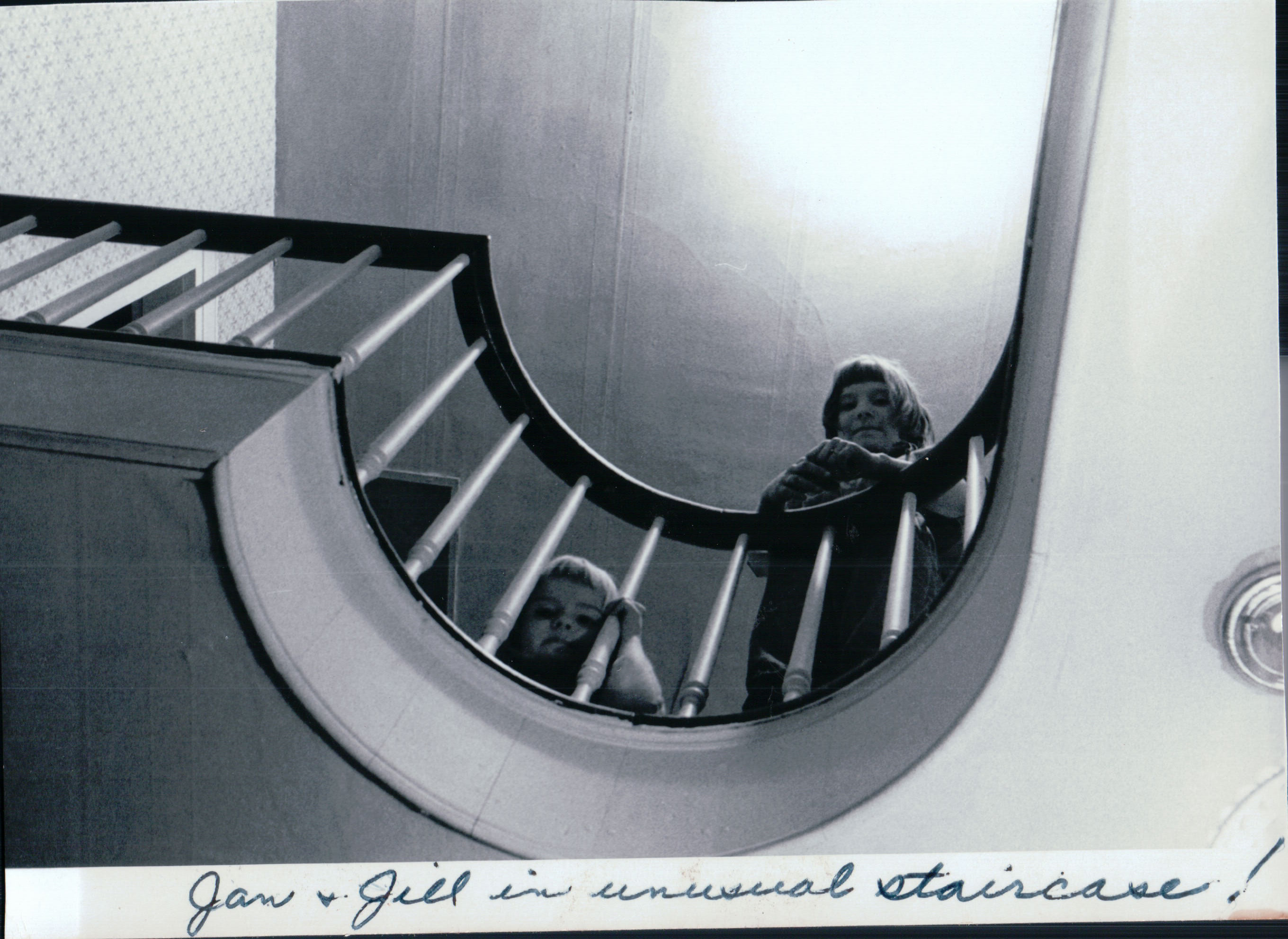{Lent always brings the daily discipline of writing for me. Just because. And it’s personal, yet very public. My topic this year: room(s).}

As I was sorting through photos and slides for yesterday’s entry here, I ran across some pictures that reminded me of an odd “room” in our 1820s Liberty Ave. home in Endicott, NY. It wasn’t on my list of rooms when I planned this series (yeah, some of it was planned). But there it was: the un-named room in the front entry hall of the house. Realtors wouldn’t have counted it as an actual room, but with six kids in the family, we spread out through the whole 13 room (not counting this one) house.
The most unique architectural feature of this home was unsupported winding stairway. The entry hall then was two stories high, and while the upper level contained only a spinning wheel, the lower level just inside the front door (and leading to the dining room I described yesterday) served variously as 1) a TV room, 2) Dad’s “office,” and 3) a play room. Not all at once, of course, but over the years we lived there.
I have two memories related to my Dad that spring from that “room.” It was in the hallway there…I remember us standing near the front door…when Dad told me that Grandpa Kellam had died. Dad’s father had been hospitalized for some time, but still… And all I could think of to say (idiot!) was, “No kidding.” Lord, that’s probably one of maybe three things I’ve said that I’d love to go back and erase permanently.
Dad, understandably, was upset at that thoughtless remark. Sternly he replied, “No! I’m not ‘kidding.’ Why would I kid about that!?” I apologized, red-faced. I guess it was probably the first time I’d ever been told of a family death and had no script to follow. But I was a senior in high school and should have had a far more sensitive response.

The second memory is related to that one. This was the era of Dad’s desk being in that downstairs hallway, just under the stairs. He was going to call his mother to tell her the news. Now, my grandparents had been divorced since Dad’s childhood, so Dad was trying to put his sorrow into words before he made the long-distance call to Nana. He sat at his desk, and I saw that he had written his script for the call. “Mom, I have some bad news. Dad died this morning.” It wasn’t that he didn’t know how to say it; he was trying to say the sentence without losing his composure, and having a script would help. I saw what he had written and left him to the difficult call. At that point, I did have some sense… finally.

Other days in that non-room, that hall space, were more pleasant. The TV was in there during one period. It kept us kids out of the more lovely living room. I guess Mom and Dad must have watched some programs in there, but I can’t remember any chairs! We kids were used to sprawling on the floor, not only for TV, but for board games too. And homework.
A couple of years ago, I was invited to go back to that home while part of it was being renovated, and I saw the way the winding stairs were constructed. Someone should have gotten a genius award for that design. Awesome.
I guess something to consider beyond my nostalgic look back is this: what have you said in a fleeting moment that you wish you could erase? The wonderful singer/storyteller Steve Goodman wrote a song called “Videotape.” In it, he mused that if his life had been on videotape, he could rewind it and erase his regrets. I know what he was singing about. And you may too.




